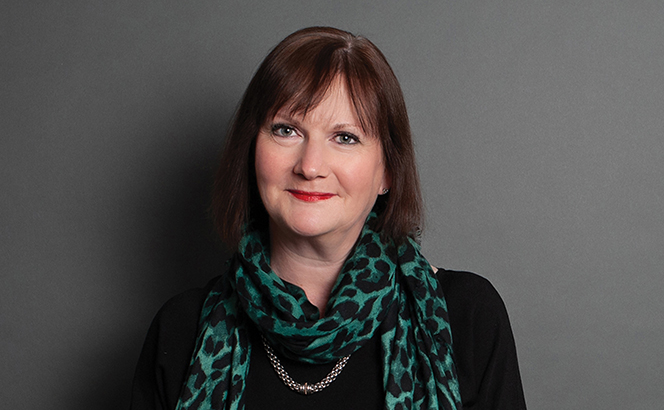Marie Johansen Nordland talks to leading London lawyers about patent trends in the life sciences sector.
Buzz about blockbuster drug developments, expiring patents and the launch of the European Union’s Unified Patent Court – 2023 certainly kept the life sciences sector on its toes.
Against a backdrop of several of the world’s best-selling drugs nearing their patent expiration dates and the market getting to grips with the implications of the long-awaited EU patent court, leading practitioners at UK law firms provide their perspective on the evolving world of IP and patent litigation in the life sciences sector – and what these changes mean for corporates and their in-house legal teams.
A biologics patent cliff?
‘Patent litigation is as busy as it’s always been,’ says Clare Tunstall, head of the IP and life sciences department at Pinsent Masons. ‘There are more blockbuster patents going off patents in the next five years than there have been in the last five. The ones that are now coming off are the top five or six, all at the same time – some big biologics. We’re going to see a lot of intense patent litigation,’ she adds.
‘The patent cliff for biologics is happening, and it’s happening now,’ echoes her fellow Pinsents partner Christopher Sharp.
Stephen Bennett, partner at Hogan Lovells, agrees that there is a lot of litigation in the pipeline on big drugs right now but is less convinced that there’s a patent cliff. ‘We’ve certainly had this before, where people have reported what they call a patent cliff, where it’s just so happened that a group of products that have become big had similar expiry dates on their key patents.’
More generally partners say clients are increasingly happy to litigate. ‘Clients are more willing to challenge patents now than perhaps historically would have been the case,’ says Tunstall. ‘When I started, it was unheard of for an innovator to go up against another innovator, but now you have to – this is a trend that’s been going on for a while, but we’ll continue to see an increase in this,’ she adds.
‘We have clients coming in wanting to challenge and enforce patents as part of their business model, rather than as a last resort.’ Christopher Sharp, Pinsent Masons
‘Clients are less afraid of litigation’, agrees Sharp. ‘We have clients coming in wanting to challenge and enforce patents as part of their business model, rather than as a last resort.’
Significantly, this increase in patent litigation isn’t just happening at the point of patent expiry but is also now happening throughout the full life cycle of drug discovery. As Bennett notes: ‘What we’ve had more of lately is litigation before product launch. New entrants in the market and existing players bringing new products see that there are issues with the patents of other innovators, and to remedy the issue, they want to sort the patent picture out pre-launch. We have seen an uptick in that. It’s a different sort of litigation, and it’s quite exciting for us because normally we’re litigating things that have been on the market for 10-15 years,’ he says.
The biosimilar boom
Another trend pointed out by partners is how drug and technology developments are changing client approaches to legal advice. ‘I think today’s blockbusters have pretty much gone – is anyone going to find a new Lipitor or a new Viagra? I don’t think so,’ argues Sally Shorthose, joint head of the international life sciences regulatory group at Bird & Bird. Instead, the market is moving towards more advanced, specialised therapies, such as gene editing technology CRISPR, personalised cancer treatments, antibody therapies, and, notably, biosimilars. ‘We’re finally seeing the boom of biosimilars now (…) For ten years it was something like one a year, now there’s several in the UK currently running,’ says Sharp.
The shift from traditional biologics to biosimilars means a change in approach for in-house legal teams and innovators. Bennett emphasises that there are different regulatory regimes for different classes of drugs, as well as different systems for reimbursements for such products, which patent lawyers and in-house teams need to consider.
‘Patent lawyers have to think about a whole new regulatory area. If you’re litigating the patents, all of that is relevant. And so what we’re seeing is that coming more to the fore, in the consideration of patent lawyers, they’re having to assimilate.’
The changes also mean in-house legal teams need to adjust their approaches and strategies. While the biological compounds used in the manufacture of biologics are relatively easy to produce in a lab, the production of antibody therapies and biosimilars is different. Likewise, technological advances such as CRISPR and the advent of AI bring further new challenges.
‘It’s a different sort of litigation, and it’s quite exciting for us because normally we’re litigating things that have been on the market for 10-15 years.’ Stephen Bennett, Hogan Lovells
Inga-Marlene Pietsch, an IP special counsel at Covington in London, points out that these new therapies require a manufacturing process so highly specialised that a company seeking to protect its product will have to look to other parts of IP law to do so. ‘Traditional innovators are more familiar with patents at the patent protection stage, but in-house teams will need to get familiar with other rights such as copyright and trade secrets,’ Pietsch warns. ‘There’s an increasing crossover between life sciences and technology; needs are changing in terms of more general and broader advice being required. Clients have more questions related to trade secrets as well as general questions around protectability, as opposed to what we’ve observed previously.’
To address this, private practice lawyers highlight the growing importance of cross-departmental collaboration, with technology teams and regulatory practices. ‘Clients need the combined skills,’ says Jane Summerfield, co-head of Hogan Lovells’ life sciences and health care industry group and life sciences regulatory and commercial practice head in London. ‘We’re working more with our colleagues who work with clients in the early stages,’ echoes Bennett, ‘and with our regulatory teams, particularly in the US and the EU.’
The New World of the UPC
Another key driver of activity is the new EU Unified Patent Court. The court, which started operating in June 2023 after a long wait, has exclusive competence in respect of European patents and patent applications across its contracting member states. The UK, originally a signatory to the 2013 UPC Agreement, formally withdrew its ratification of the treaty in July 2020, leaving UK corporates and their in-house legal teams uncertain of their place in (or outside) the new regime.
‘We’re seeing more activity from the life sciences in the UPC than was originally anticipated,’ says Tunstall, adding that ‘no discussion around strategy is safe without discussion of your UPC strategy.’
‘Lots of patentees opted out in the beginning, but so far all the decisions have appeared very patentee friendly,’ notes Pietsch, adding that ‘the UPC could be a serious forum for patentees to seek patent enforcement if it keeps developing as it has been doing so far.’
According to Tunstall, the UPC means corporates and their in-house teams to be aware of the relative pros and cons of individual jurisdictions. ‘Clients see the UPC as a jurisdiction – a very important jurisdiction, yes, but another layer on the onion,’ she says. What clients want to know, she continues, is ‘how do you blend these different fora to achieve your strategic goal? How will clients use the UPC strategically to influence? A strategic use of fora, especially in the high-value actions that are going to come through regarding biologics, is going to be key.’
‘The UK still benefits from being a relatively fast jurisdiction, an influencer jurisdiction. It’s a super interesting time.’ Clare Tunstall, Pinsent Masons
Despite Brexit and the UK’s withdrawal, from the UPC partners argue that the UK is in a strong position. ‘The UK still benefits from being a relatively fast jurisdiction, an influencer jurisdiction. It’s a super interesting time,’ says Tunstall. ‘From a life sciences point of view, the UK is still one of the most valuable markets in Europe,’ agrees Sharp. Bennett echoes this, noting that ‘the UK has been a key market for litigation (…) because clients can have certainty sooner than elsewhere in Europe. It’s a speedier market.’
Overall, partners maintain that this is a time of opportunity for UK corporates. ‘Looking forward to the UK as an IP regime, we’re confident that it will still have a presence. We have 60-odd million people – that’s 60-odd million patient consumers,’ says Shorthose. ‘You’d be a brave innovator to ignore the UK as a place to patent your product.’
The combination of emerging technologies, including AI, CRISPR, and biosimilars, and the opportunities and insecurities brought by the UPC means that the current world of IP and patent litigation in the life sciences space is one of opportunity for lawyers too. As Sharp concludes: ‘it’s a moment to potentially influence jurisprudence across major markets that will define the space for many years to come.’
This article first appeared on Legal Business.







